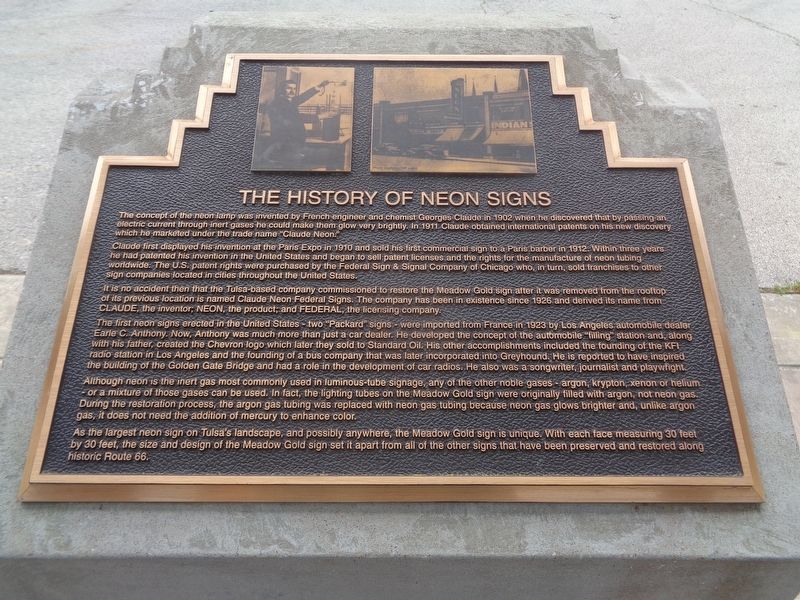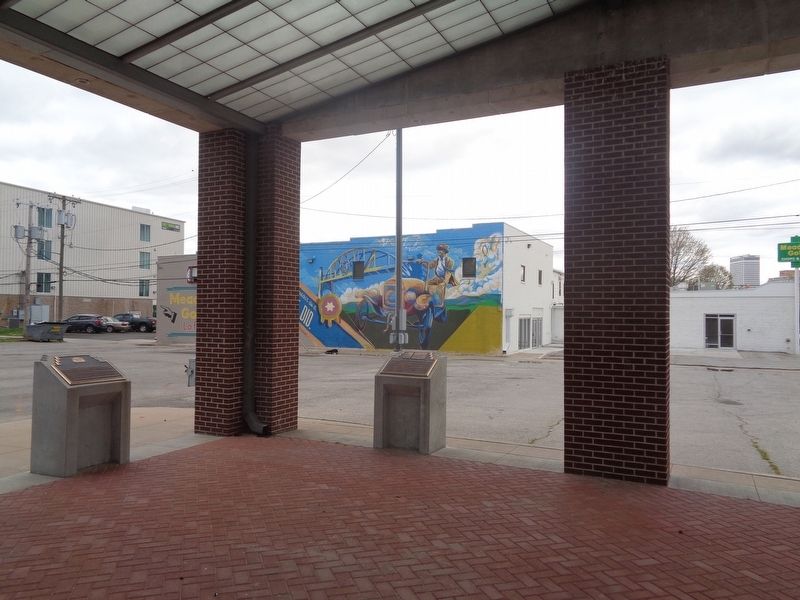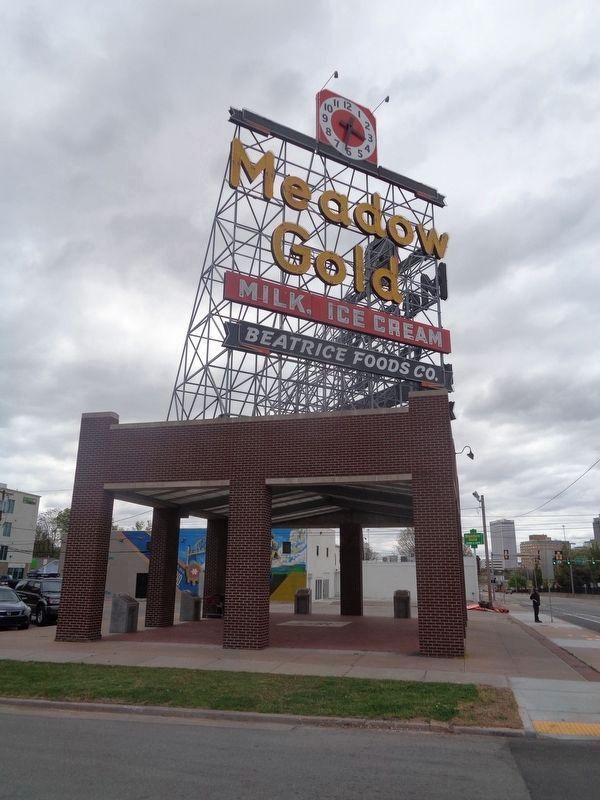Central Park in Tulsa in Tulsa County, Oklahoma — The American South (West South Central)
The History of Neon Signs
Claude first displayed his invention at the Paris Expo in 1910 and sold his first commercial sign to a Paris barber in 1912. Within three years he had patented his invention in the United States and began to sell patent licenses and the rights for the manufacture of neon tubing worldwide. The U.S. patent rights were purchased by the Federal Sign & Signal Company of Chicago who, in turn, sold franchises to other sign companies located in cities throughout the United States.
It is no accident then that the Tulsa-based company commissioned to restore the Meadow Gold sign after it was removed from the rooftop of its previous location is named Claude Neon Federal Signs. The company has been in existence since 1926 and derived its name from Claude, the inventor; Neon, the product; and Federal, the licensing company.
The first neon signs erected in the United States - two "Packard" signs - were imported from France in 1923 by Los Angeles automobile dealer Earle C. Anthony. Now, Anthony was much more than just a car dealer. He developed the concept of the automobile "filling" station and, along with his father, created the Chevron logo which later they sold to Standard Oil. His other accomplishments included the founding of the KFI radio station in Los Angeles and the founding of a bus company that was later incorporated into Greyhound. He is reported to have inspired the building of the Golden Gate Bridge and had a role in the development of car radios. He was also a songwriter, journalist and playwright.
Although neon is the inert gas most commonly used in luminous-tube signage, any of the other noble gases - argon, krypton, xenon or helium-or a mixture of those gases can be used. In fact, the lighting tubes on the Meadow Gold sign were originally filled with argon, not neon gas. During the restoration process, the argon gas tubing was replaced with neon gas tubing because neon gas glows brighter and, unlike argon gas, it does not need the addition of mercury to enhance color.
As the largest neon sign on Tulsa's landscape, and possibly anywhere, the Meadow Gold sign is unique. With each face measuring 30 feet by 30 feet, the size and design of the Meadow Gold sign set it apart from all of the other signs that have been preserved and restored along historic Route 66.
Erected by
Vision 2025.
Topics and series. This historical marker is listed in these topic lists: Industry & Commerce • Roads & Vehicles. In addition, it is included in the U.S. Route 66 series list. A significant historical year for this entry is 1902.
Location. 36° 8.863′ N, 95° 58.488′ W. Marker is in Tulsa, Oklahoma, in Tulsa County. It is in Central Park. Marker is on East 11th Street (Old U.S. 66) west of South Quaker Avenue, on the left when traveling west. Marker is under a structure which holds the Meadow Gold sign. Touch for map. Marker is at or near this postal address: 1324 E 11th St, Tulsa OK 74120, United States of America. Touch for directions.
Other nearby markers. At least 8 other markers are within walking distance of this marker. History of This Site (here, next to this marker); The History of Meadow Gold (here, next to this marker); Saving the Meadow Gold Sign (a few steps from this marker); Leyh Building (approx. 0.4 miles away); Warehouse Market (approx. 0.4 miles away); Tulsa Monument Company (approx. half a mile away); Dry Cleaners (approx. half a mile away); Elliott Building (approx. 0.6 miles away). Touch for a list and map of all markers in Tulsa.
Also see . . .
1. Neon sign (Wikipedia). (Submitted on April 22, 2021, by Jason Voigt of Glen Carbon, Illinois.)
2. Georges Claude on Wikipedia. (Submitted on April 22, 2021, by Jason Voigt of Glen Carbon, Illinois.)
Credits. This page was last revised on February 16, 2023. It was originally submitted on April 22, 2021, by Jason Voigt of Glen Carbon, Illinois. This page has been viewed 528 times since then and 75 times this year. Photos: 1, 2, 3. submitted on April 22, 2021, by Jason Voigt of Glen Carbon, Illinois.


